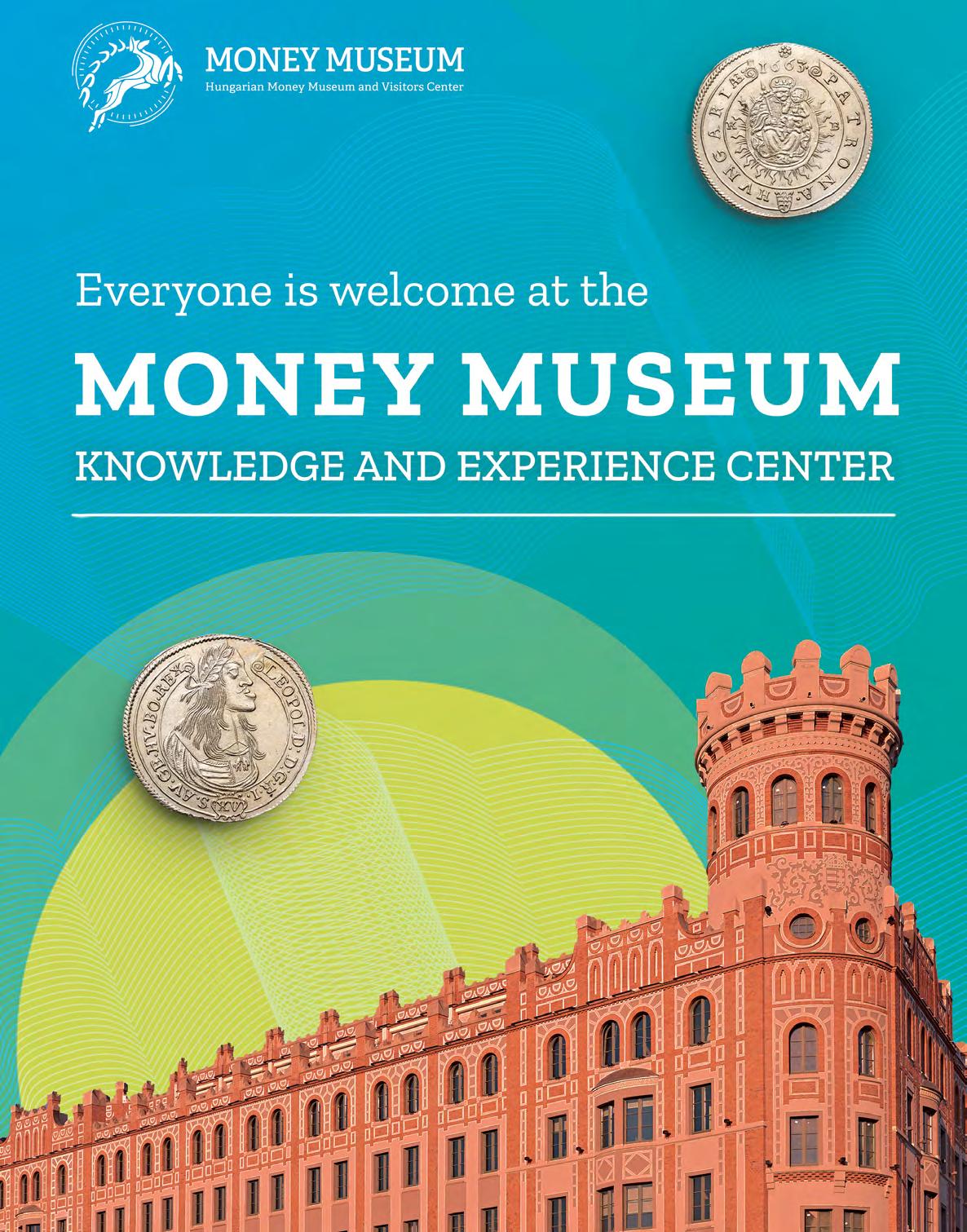Tian Guoli
The New Silk Road is a global public good


The New Silk Road is a global public good

New challenges, new opportunities
– Levente Horváth
GEURASIA 2-3.
China’s joint venture with Eurasia – Gergely Salát
4. Afghanistan can become the Saudi Arabia of lithium
– Sándor Köles
5. The Chinese luxury market could be the world’s number one
– Patrícia Fischer
6-7.
The significance of the TransCaspian International Transport
Route – Ágnes Bernek
8-10.
The New Silk Road is a global public good: Interview with Tian Guoli, President of China Construction Bank
– Levente Horváth
12. Smart city key to sustainability
14. Eurasia Forum – top quotes
15. Singapore as a leader in technological development
– Péter Klemensits
16. East Asia turns towards social well-being
– Marcell Horváth – Eszter Boros
17. Israel: a start-up country
– Meszár Tárik
18. Halal foods find new markets
21. Book reviews
22-24.
Hungarian ambassador of Asian gastronomy: interview with food
blogger Li Mengyi
– György Szalma
25. Highlights of Eurasia – Japan
RHYMES IN HISTORY
27-28.
The Glass Bead Game 2.0
– David Bartosch
29. Derinkuyu:
The mysterious underground city of Türkiye
– Loretta Tóth
30-31.
“If we were to unleash the abilities of every single person in Asia and let them fulfil their potential, the resulting force would be truly tremendous. Linking the Pacific and Eurasia.”
Abe Shinzo– Szabolcs Veres
19. Neumann 2023
The abandoned Eden
– Gábor Margittai
One of the biggest changes for 2023 is that after three years, China has almost completely lifted its strict closures imposed to combat the coronavirus and is reopening its doors. Chinese President Xi Jinping personally attended the Shanghai Cooperation Organisation meeting in Uzbekistan last September, the G20 summit in Bali in November, and the China-Gulf Cooperation Council (GCC) Summit in Riyadh in December. In addition, following the Chinese party congress, several state leaders, including German Chancellor Olaf Scholz, visited Beijing to discuss cooperation with the Chinese government.


China has lifted its entry ban, which means that in 2023 we can expect a huge increase in Chinese diplomatic visits, delegations abroad, and Chinese tourists, the Belt and Road Initiative could get a new boost, making this year a year of new opportunities for Eurasia and of course Europe.
Eurasia Magazine helps to present these opportunities through objective analysis and articles, rather than presenting a demonised picture of the emerging economic players and protagonists of the 21st century global economy.


CHINA HAS BECOME A GLOBAL PLAYER SEEKING TO REORGANISE ITS IMMEDIATE AND WIDER ENVIRONMENT WITH ITS BELT AND ROAD INITIATIVE (NEW SILK ROAD) TO BECOME ONE OF THE HUBS OF THE NETWORKS IT HAS CREATED. THIS WILL BE A MAJOR OPPORTUNITY FOR THE COUNTRIES OF EURASIA.

Until the 2000s, China’s position in the global economy was typical of peripheral players, but the situation has changed in the last decade and a half. China has moved (or moved back rather) towards the centre, and in many areas, from e-commerce through artificial intelligence and high-speed railway technology to robotics, it is now at the forefront of the world with quantitative growth replaced by qualitative progress.
China has turned towards Eurasia, as it can facilitate the success of its basic economic, political and security interests by reorganising the supercontinent. As for links with the West, the land strip to Europe is full of countries that are not part of the US sphere of interest and that have development needs that China is best placed to fulfil. It was to hold these natural Eurasian endeavours together that Beijing formulated the greatest development program of all time, the Belt and Road Initiative concept at the beginning of the 2010s.

The BRI is not a detailed program, but rather a vision of a Eurasia (with Africa connected) linked together by a dense network of highways, railways, sea and air routes; oil, gas, electricity and fiber-optic lines from China to Western Europe in which no legal barriers, customs borders or travel restrictions hinder the free movement of goods, capital and people.
This year marks the 10th anniversary of the Belt and Road Initiative (BRI), China is considering hosting the third Belt and Road Forum for International Cooperation, Xinhua reported. At the beginning of 2023, China signed a Memorandum of Understanding (MoU) on the joint construction of the BRI with Turkmenistan and signed an updated MoU on the BRI with the Philippines. The Asian-Pacific countries have full confidence in the "China engine," regional development and future cooperation.
The author is a sinologist, translator and associate professor at Pázmány Péter Catholic University and Eötvös Loránd University, and senior researcher at the Institute of Foreign Affairs and Foreign Trade
China will play a central role through the Belt and Road Initiative in the Eurasian supercontinent, but every participating country will benefit from the development of connections in every direction.Graphic: Alexandra Érsek-Csanádi
Afghanistan has had a reputation over the centuries as the “graveyard of empires”. The country has played a special role historically, alternating between geo-strategic insignificance and being a global geopolitical hotspot.

Because of its geographical location between the Iranian plateau and the Hindu Kush mountains of the western Himalayan region, Afghanistan has always been the crossing point of various empires over the centuries, none of which have been able to occupy the country permanently.

Since the withdrawal of coalition forces it has become clear that the vacuum of security and power in the Hindu Kush is filling rapidly.
The broader consequences of the withdrawal of coalition forces from Afghanistan for the United States and its allies are still unclear. But subsequent to the failures in Iraq and Afghanistan, and with the rise of Islamism in Libya and Syria, the fall of Kabul could mean the stranding of Western efforts to establish an institutionalized world order.
Afghanistan’s harsh terrain and lack of navigable rivers are factors that hinder internal economic dynamism. Also, the fact that it is landlocked means it cannot easily take part in the international trade. However, Afghanistan’s geography is a blessing as well as a curse.
In a world struggling with a shortage of raw materials, one of the important economic ways out for Afghanistan would be if it could exploit its much-
touted natural resources in a sustainable way. Based on US research and information as well as other sources, Afghanistan could become the “Saudi Arabia of lithium” in the near future.
The author is a sociologist, cultural anthropologist, international analyst and Chairman of the Board of Trustees of the Carpathian Foundation
Afghanistan’s mineral resources, particularly its lithium deposits can play a key role in the global energy transition to renewable resources. China is already in talks with the Afghan leadership to invest in the country's lithium sector. Furthermore, they recently signed and oil extraction contract
Chinese Xinjiang Central Asia Petroleum and
One of the important economic ways out for Afghanistan would be if it could exploit its muchtouted natural resources in a sustainable way.with Gas (CAPEIC). The Great Mosque of Herat (Photo: iStock)
 by Patrícia Fischer
by Patrícia Fischer
While the luxury markets of Europe and the United States have suffered from the pandemic mainly due to the absence of rich Chinese tourists, China’s wealthy citizens have contributed large sums to global luxury spending. By 2020, China had grown into the second largest luxury market in the world, valued at USD 44 billion. The US luxury market was estimated at USD 55 billion in the same year.
The segment is already quite significant and, according to international consultants Bain & Company, the Asian economy could become the world’s
Chanel has been ranked as the most active content publisher among luxury brands in 2022 on WeChat by iPaiban, a WeChat layout tool and data analysis platform. With email marketing largely absent in China, WeChat is the most effective way for brands to directly communicate with consumers via their official accounts. Most brands are registered as corporate accounts on WeChat, which allows them to push content to all of their subscribers four times a month. Chanel had the most total views on WeChat with its own content at 3,745,517 views, a 180.54 percent increase from 2021, iPaiban revealed after comparing WeChat data from Fendi, Prada, Hermès, Chanel, Louis Vuitton and Burberry. They respectively published 48, 38, 59, 72, 35 and 63 articles on WeChat in 2022.
largest luxury market by 2025 at current growth rates. As Bain & Company stated, China’s luxury market grew at roughly 48 percent in 2020. This growth was fostered by the introduction of travel restrictions due to Covid-19, as China’s wealthy spent their money in their home country instead of the traditional ”fashion capitals”.
Considering the significant increase in disposable incomes, the expansion of the nouveau riche and the tradition of giving gifts that is embedded in Chinese culture, the massive boom in the Chinese luxury sector in recent years is anything but surprising. In addition, a number of international players have appeared in the domestic market. Luxury brands that have faced challenges in other parts of the world tend to find their accounts in China.
The author is an economic journalist
THE WAR IN UKRAINE HAS FUNDAMENTALLY REARRANGED THE ROUTES FOR TRANSPORTING GOODS BETWEEN EUROPE AND ASIA. EUROPE AND CHINA BOTH HAVE VESTED INTERESTS IN DEVELOPING THE MIDDLE CORRIDOR, ALSO KNOWN AS THE TRANS-CASPIAN INTERNATIONAL TRANSPORT ROUTE.
 Photo: AFP/Axel Heimken
Photo: AFP/Axel Heimken
Up until the Russian-Ukrainian war that began on 24 February 2022, 95 per cent of rail freight traffic between Europe and China was carried along the Eurasian Northern Corridor (China-KazakhstanRussia-Belarus-Poland-Germany- France-Spain). The key advantage of this main transport route is that within the framework of the Eurasian Economic Union, there is a customs union and a single economic zone (in terms of freight transport) between Russia, Kazakhstan and Belarus.
The economic sanctions against Russia and Belarus also apply to traffic transiting through these countries, meaning that an increasing share of rail freight is beginning to shift to the emerging Eurasian Middle Corridor. Its route enters the European continent from China, via Kazakhstan, through the

Caspian Sea and the South Caucasus, Türkiye or the Black Sea. This transport corridor is also known as the Trans-Caspian route because of the section crossing the Caspian Sea.
Freight transport via the Middle Corridor is still a fraction of what it used to be via Russia and Belarus, with a capacity currently equivalent to only 5 per cent of the main Eurasian Northern transport route. At the same time, on account of the war, the demand and the need for the substantial development and use of the middle route by carriers is increasing.
The author is a senior research fellow at the Eurasia Center of John von Neumann University, and head of the Geopolitical Research Group
The European Union has promoted the Trans-Caspian International Transport Route, also known as the Middle Corridor as an alternative to the traditional Northern route for the Europe-Asia railway shipments which crosses Russia. The European Bank for Reconstruction and Development announced in last November that they would put billions of euros into the creation of freight paths between Europe and Asia which do not go through Russia.
China's busiest port, the Port of Ningbo Zhoushan in the eastern province of Zhejiang, saw its cargo throughput exceed 1.25 billion tons in 2022, ranking first globally for a 14th consecutive year.Source: AFP/ANADOLU AGENCY, Yasin Demirci
THE BELT AND ROAD INITIATIVE IS NOT ONLY ABOUT DEVELOPING TRADE OR BUILDING INFRASTRUCTURE, BUT ALSO ABOUT PROMOTING MUTUAL TRUST, ECONOMIC INTEGRATION AND CULTURAL INCLUSION. IT’S NO EXAGGERATION TO SAY THAT THIS PROGRAMME IS A MUTUALLY BENEFICIAL GLOBAL PUBLIC GOOD FOR ALL PARTICIPANTS - SAID TIAN GUOLI, PRESIDENT OF CHINA CONSTRUCTION BANK (CCB), IN AN INTERVIEW WITH OUR MAGAZINE.
- How do you see the role of the Belt and Road Initiative (BRI) in the Eurasian cooperation?
- The Belt and Road initiative is creating a new model for economic and trade cooperation, and connections between people. The programme will
nomic players of developed Europe, while in the middle is a vast hinterland with its own huge development potential and diverse resources.
- What are the benefits of the Belt and Road Initiative for the Eurasian nations?
- Under the programme, China is promoting a new development paradigm, adhering to the principles of inclusive consultation and mutual benefit. The cooperation has helped unlock the economic potential of the Eurasian countries along the Belt and Road and increased their collective competitiveness on the international market. The initiative helps to eradicate poverty in the countries that are building together under the programme.
promote the healthy development of economic globalisation. The BRI is a global public good. The Belt and Road takes you across the continents of Asia, Europe and Africa. At one end are the dynamic East Asian economies, at the other the eco -
- China Construction Bank is one of China’s big four banks and one of the world’s largest financial institutions, with many branches internationally. How is the BRI supported? Do you have related projects in the Eurasian region?
The new development philosophy of cooperation is one of innovative, coordinated, green and open development for all.

- Our bank supports the Belt and Road Initiative with the “finance + solutions” service concept. We prepared a comprehensive financial services plan for the New Silk Road Economic Belt and the 21st Century Maritime Silk Road. Along the Belt and Road, we have set up institutions in nine countries, including Hungary. The CCB has also provided financial support to more than 200 BRI projects in Eurasian countries in the fields of energy, transport and other infrastructure.

- Can Hungary be seen as a gateway or bridge between the EU and China. How do you see Hungary in the Belt and Road Initiative? How can Hungary contribute to the sustainable development of the Eurasian region?
- As part of this initiative, Hungary has long been an important gateway to Europe, and it is one of the major distribution centres for Chinese goods in Europe. In November 2021, China and Hungary signed two agreements to promote investment and cooperation in green development and the digital economy. Chinese companies continue to invest heavily in Hungary, with investment projects covering a range of sectors, including infrastructure and green energy.
The author is the Director of the Eurasia Center of John von Neumann University






















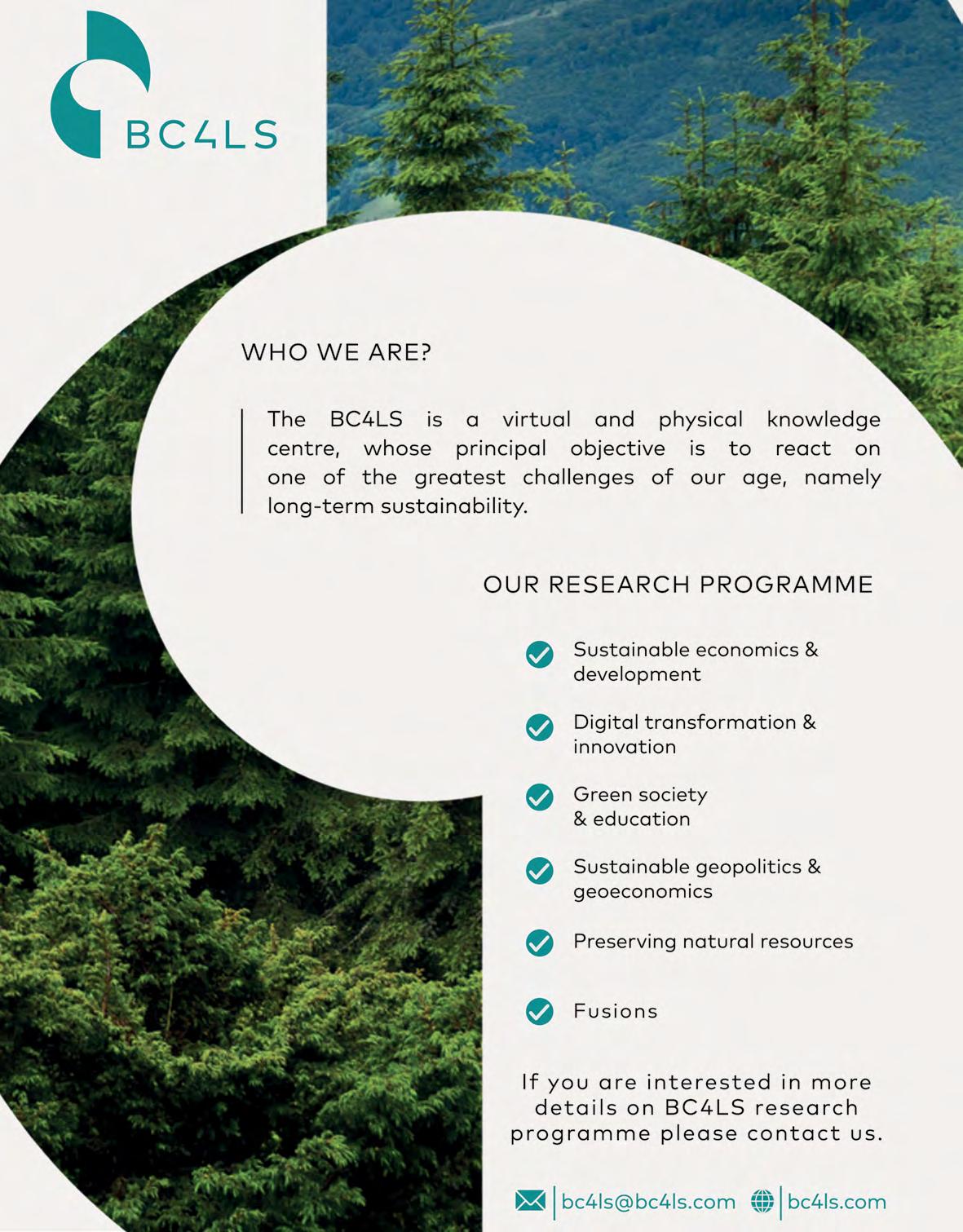

THE BUDAPEST CENTRE FOR LONG-TERM SUSTAINABILITY (BC4LS) LAUNCH ED ITS PROFESSIONAL-CULTURAL EVENT SERIES, BC4LS OPEN EVENTS, WHICH PROVIDES AN EXCELLENT MEETING POINT FOR THOSE INTERESTED IN THE TOPIC OF SUSTAINABILITY.
At the round table discussion on 16 February entitled "Smart Cities, Circular Economy, and Sustainability", in addition to Brian Chi-ang Lin, BC4LS Researcher, Sustainability Professor and Business Consultant at the National Chengchi University Taipei in Taiwan, Gyula Zilahy, Professor and Head of Department of Environmental Economics and Sustainability at the Budapest University of Technology and Economics talked with Dávid Papp, the Head of Policy Unit of the Sustainable Finance Department of Magyar Nemzeti Bank, the central bank of Hungary.

The development of a smartcity concept is the key to the creation of sustainable cities
– Dávid Papp
If a smart city wants to become a functional community responsible for environmental sustainability, then the emergence of circular buildings is essential
– Brian Chi-ang LinBrian Chi-ang Lin and Gyula Zilahy

More investors recognize that with sustainable investment, they could help build a better future without compromising better returns.
Jun Zhu Chairwoman, Silk Road Fund Co., Ltd.Each crisis creates new opportunities. Eurasia should use these opportunities in economics and trade.
Mehmet H. Bilgin Chair, Euro-Asia Forum in Politics, Economics and BusinessIn my understanding, free market, competition is the best incentive to innovation.
Zoltán Cséfalvay Head of Center for Technology Futures, School of Economics, Mathias Corvinus CollegiumSingapore, which covers 733 square kilometres and has a population of 7.6 million, is not only one of the most advanced countries in Southeast Asia, but also one of the most advanced in the world.
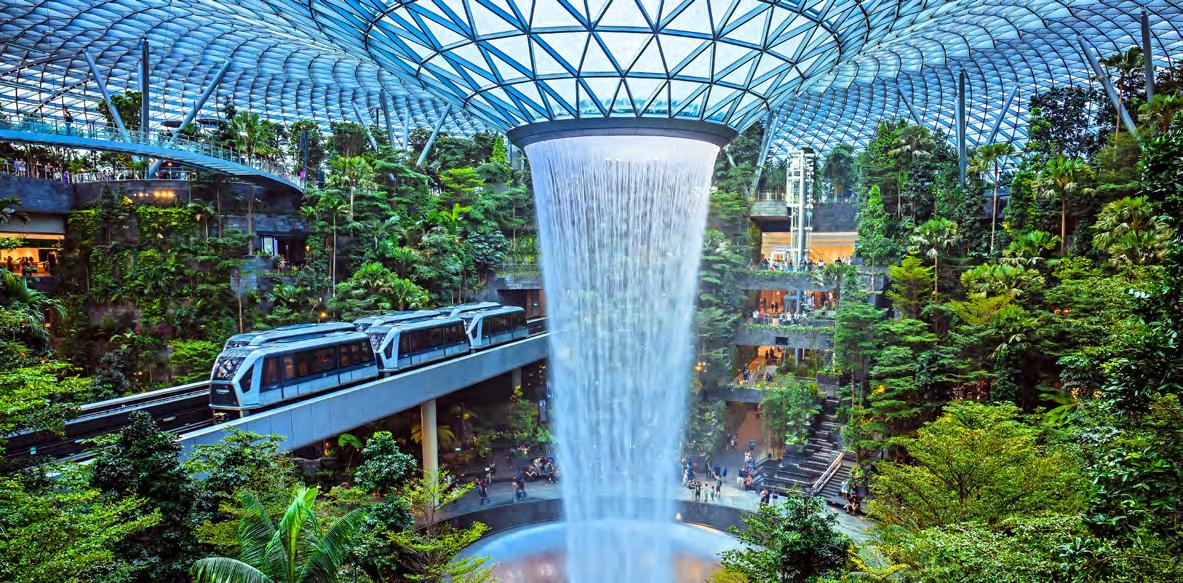
The country's leaders have recognised from the outset that continuous technological innovation is key to ensuring Singapore's competitiveness, as it is a key driver of the country's economy.
Singapore is rapidly becoming a smart nation, using digital smart technologies to create new jobs and business opportunities and transform the way people live, work and play. Smart nation
also means fundamentally rethinking business models to make sweeping changes to achieve productivity gains and create new growth areas.
The COVID-19 pandemic has reinforced Singapore's leaders' belief that the city-state can only respond competitively to geopolitical changes in the long term if it commits to further innovation.
Innovation-related along with programmes such as the National Artificial Intelligence Strategy, will enable the adoption of programmes that will ensure the country's leadership in areas such as robotics, aerospace, and information and communications technology.
Much of the Singapore's success can be attributed to the vision of one man - Lee Kuan Yew,Singapore's first prime minister who was in office from 1959 to 1990. After Singapore's separation from Malaysia, Lee Kuan Yew leds Asia's smallest country to emerge as one of the world’s most powerful financial centres.Lee maintained a tight grip on domestic finance by preventing the internationalisation of the Singapore dollar and limiting the operations of foreign banks. This meant international firms saw an opportunity to establish themselves in the tiny island nation.
 by Marcell Horváth – Eszter Boros
by Marcell Horváth – Eszter Boros
Over the past decades, East Asia has become known for its “Little Tigers”, or rapid economic growth. Most recently, the impact of the Covid-19 crisis has highlighted Asia’s further potential for prosperity, and even the widespread expansion of prosperity, and with the new social policies in China, Korea, Japan and elsewhere, the whole world stands to gain as consumer markets can expand spectacularly.
In 2021, on the 100th anniversary of the founding of the Communist Party of China (CPC), it was announced that the historic task of eradicating deprivation and achieving a “moderately prosperous society” had been accomplished, with an additional 100 million Chinese people lifted out of extreme poverty in the final phase.
This milestone opened a new chapter in Chinese social policy. Shared prosperity is a step up, as it focuses on the highest quality of life (well-being) in the widest scale. Promoting general wellbeing can also help China achieve one of its long-standing goals: to boost consumption.
In 2021, Japanese Prime Minister Fumio Kishida announced a “new capitalism” that would transform the way the market economy works through the quartet of innovation, digitalisation, green transition and resilience.
China to boost spending in 2023 economic revival drive
China’s top economic planner aims to help boost domestic consumption and woo more foreign investors this year as it seeks to revive the country’s Covid-hit economy.
In a People’s Daily interview, Zhao Chenxin, deputy chairman of the National Development and Reform Commission (NDRC), said authorities would align fiscal, monetary, industrial, technology and social policies to promote growth. The government would also give support to previously tightly regulated sectors such as property and internet companies as part of a wider push to increase consumer spending.
Other major players in the East Asian region, such as South Korea and Singapore, are also pursuing a “new capitalism”. One way or another, these countries will have to cope with the (partial) depletion of the growth models they have had so far, and they seem to have the necessary adaptability for this.
Marcell Horváth - The author is the Executive Director for International Relations of the Magyar Nemzeti Bank, Hungary’s central bank Eszter Boros – The author is an expert in the International Relations Directorate of the Magyar Nemzeti Bank
 by Meszár Tárik
by Meszár Tárik
Recently published data from the Israel Innovation Authority shows that the country is a "start-up nation". US research firm Startup Genome ranked Tel Aviv seventh in its annual survey of the world's best start-up ecosystems.
Among the reasons for start-ups to move to Tel Aviv are tax incentives and preferences for individual investors. Israel's Ministry of Economy also offers wage subsidies for certain groups, such as students and minorities.
Israel's unique society and culture, strong economy, government support and "global-first" market
approach are just some of the factors that make Israel's innovation ecosystem one of the most successful in the world. According to Deloitte, other important characteristics of the Israeli ecosystem include innovation, a strong R&D capacity, skilled workforce, government support and the investment law which allows foreign companies to receive preferential corporate tax rates and investment aid.
One third of Israeli high tech companies, employing 25 per cent of the industry's workforce, are located in Tel Aviv. Jerusalem is mostly home to medium and small high-tech firms, while Haifa is home to mainly large multinational companies. Experts say that the expansion of high-tech industry is in the national, social and business interest. The development of smart industry - not only in the central cities - will promote the State of Israel, strengthen its financial position and place it alongside the world's leading countries.
The author is a researcher at the Eurasia Center of John von Neumann University

Source: World Bank, Graphic: Alexandra Érsek-Csanádi

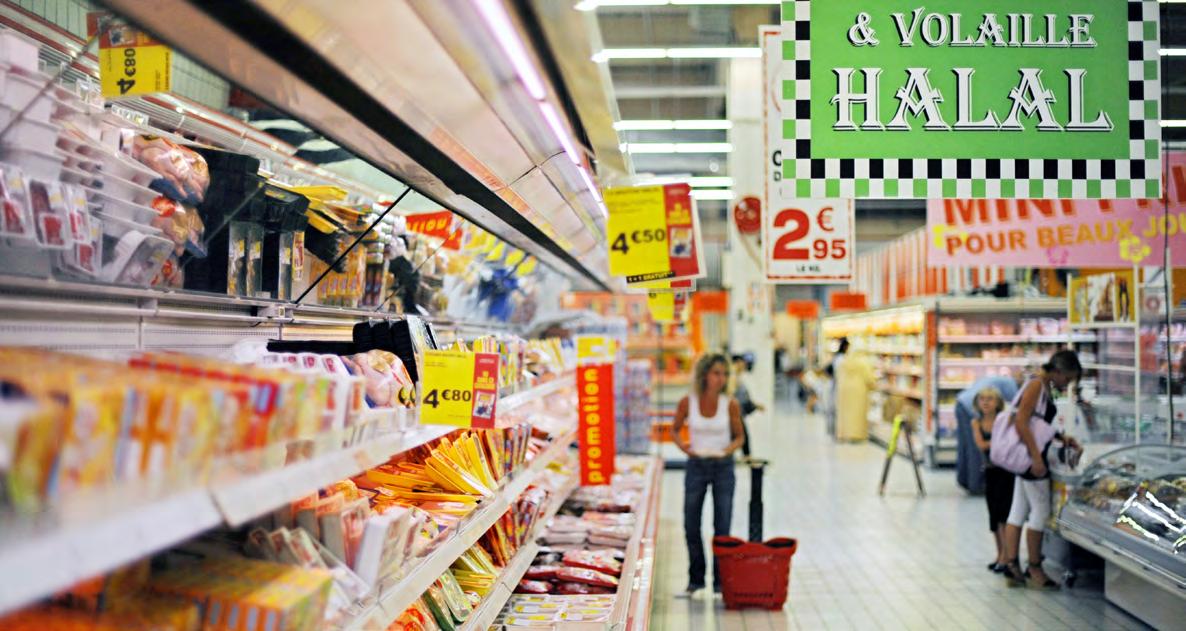 by Szabolcs Veres
by Szabolcs Veres
In Islam, a halal meal is a meal that contains only the permitted foods of Islam. The word itself refers to what is permitted or legal under Sharia, that is, according to traditional Islamic law.
In addition, the term halal is related to Islamic dietary laws, especially meat processed and prepared according to these requirements. In short, this means that halal meat must come from a supplier that applies halal practices during preparation.
The significantly increased demand for halal in the food and beverage market in recent years was primarily in Asia, Africa and Europe.
This was the main reason why significant technological changes in the production of halal products took place in the countries of Central Asia. It was the
Exports from Brazil to the 22 countries of the Arab League of nations generated record revenue of $17.7 billion in 2022, the highest since 1989, Reuters reported. Arab countries of the Middle East and North Africa predominately buy agro products like meat and grains from Brazil. Arab nations paid an average around $2,172 per tonne of Brazilian chicken in 2022, higher than $2,022 Brazil's other clients disbursed, the Chamber said. The data highlights Brazil's importance as a halal food supplier to the Arab world, where buyers pay a premium for meat produced according to Muslim dietary requirements.
first time that the countries of Central Asia managed to find an effective way to establish a common halal standard.
In Central Asia, in addition to Kazakhstan, Uzbekistan also exports halal food in significant quantities. The main destination of Uzbek halal exports is Malaysia.
Today, not only Muslim countries show interest in halal products. Nowadays, many non-Muslim countries (Brazil, India, Argentina, France, Great Britain, etc.) also import halal products from Central Asia.
The author is a researcher at the Eurasia Center of John von Neumann University
Photo: AFP/Sebastien BozonNorbert Csizmadia, Chairman of the Board of Trustees of the John von Neumann University Foundation, delivered a keynote presentation entitled Maps to change the world as the special guest of the Axis Conference in Tel Aviv. The Axis organisers described it as one of their most successful conferences, with fascinating discussions on world trends in technology and innovation. The event attracted participants from more than 20 countries.
An important element of the John von Neumann University’s CAMPUS project in Kecskemét has reached a milestone: a 34-metre long part of the pedestrian bridge connecting the old and new buildings of the GAMF Faculty of Engineering and Computer Science has been put in place.

At the end of January, the Lakitelek Folk High School and the the John von Neumann University Foundation announced a call for proposals within the framework of the Neumann 2023 programme series, on the occasion of the 120th anniversary of the birth of John von Neumann. The aim of the call is to provide students interested in the life and work of John Neumann the opportunity to develop their research skills. Nearly 50 research proposals were received by the February deadline.








Publisher: Pallas Athéné Books
Year of publication: 2021
ISBN: 978-963-573-024-7
Number of pages: 276
Globalization has entered a new period, the age of technology and knowledge, and the Eurasian era based on a long-term sustainable growth. International relations in the 21st century have become even more complex and intricate, and geography plays an important role in understanding this. Geofusion is the synthesis of network maps depicting the functional relations arranged into hubs, and can be used to outline the new economic and geopolitical powers of our world. In order to understand the processes and the driving forces of this new era, we need new maps. The book shows the geographical processes of today’s global, social, and economic world order. It also presents the 21st century global geofusional map bearing an uncanny resemblance to the map about the spread of COVID-19 pandemic which broke out in 2020…
Peter Frankopan
Published by: Knopf
Year of publication: 2019
ISBN: 978-0525656401
Pages: 320
British historian Peter Frankopan’s The New Silk Roads helps us understand a world where China has now become the leader of globalisation processes. It explores no other topic than the geopolitics of the Eurasian continent. Frankopan describes China and the vast Eurasian region it increasingly dominates, from the eastern Mediterranean to the Pacific, and does so while drawing attention to the increasingly chaotic domestic and foreign policies of the United States, the weightlessness of the European Union and the consequences of Brexit. With his outstanding encyclopaedic knowledge, global vision and factual style, Frankopan’s books always provoke a strong response. The New Silk Roads is an exciting and fascinating read for anyone interested in how the world works and wants to be able to navigate current issues in geopolitics.
HUNGARIANS BECAME AWARE OF LI MENGYI’S NAME THANKS TO A HIGHLY WATCHED SHOW ON ONE OF THE COUNTRY’S LEADING TELEVISION CHANNELS. THE YOUNG CHINESE LADY COMPLETED THE TASKS WITH A SKILL THAT PUT EXPERIENCED CHEFS TO SHAME, FINISHING THE TELEVISED COMPETITION IN SECOND PLACE.
- A Chinese friend of mine told me that in Chinese cuisine, it is not the recipe that is important, it is the Chinese way of preparing the food. Do you agree?
- I cook by instinct, adding what and how much I think is appropriate at the time. After tasting, I decide whether or not I need to add anything else to the dish. It is a slight exaggeration to say that there is no fixed recipe in Chinese cuisine. The flavours are much stronger in the north, much softer in the south, and in Sichuan everything is terribly spicy. Of course, you need a guideline to show you what ingredients are needed for a particular dish, but I think that to a certain extent, cooking is mostly improvisation. Yet in a Chinese restaurant, the chef measures out the ingredients to the gram, but the home-style cooking is based on improvisation.
- Somewhere I read that gastronomy plays a very important role in Chinese culture. What does this mean in everyday life?
- In China, when two people meet, they ask each other, “Have you already eaten?” This is the Chinese equivalent of “how are you”. Gatherings of family or friends are not about drinking, but about gathering around a circular table to eat and drink together. When I was a child, my father always rewarded me by cooking something special. When I introduced my husband to him, he welcomed him by cooking him a full table of food.
- Hungarian–Chinese fusion cuisine. Does it exist?

- I see similarities in many foods. The use of hot paprika is also a common point, and the texture of a Hungarian stew is almost exactly the same as a Chinese dish, just as pig’s ears are no stranger to the tastes of either nation. You can easily make Chinese-Hungarian fusion dishes.
The author is a journalist
In China, when two people meet, they ask each other, “Have you already eaten?” This is the Chinese equivalent of “how are you”.

Sichuan boiled fish gets undeservedly little attention because it is supressed by the bestknown Sichuan dishes - Mapo tofu, Kong Pao chicken and minced pork with garlic sauce. However, anyone who tries this spicy, hot speciality is sure to be impressed. However, it is worth knowing that it is one of the spiciest Chinese dishes, and its ’power’ comes from the combination of dried chilli, Sichuan chilli bean paste and chilli powder. For the best taste experience, fresh fish fillets are the most recommended.
250 g skinless, boneless fish fillet (catfish, cod, sea bass, pangasius can all be used),
1 pinch salt, 1 pinch white pepper,
1 teaspoon Shaoxing rice wine,
1 teaspoon corn starch,
½ teaspoon cooking oil,
15 dried chilli,
2 teaspoon Sichuan peppercorn,
1 teaspoon cooking oil,
250 g celery, cut into thin strips –or bean sprouts,
2 teaspoon cooking oil,
2 clove garlic – minced,
1 teaspoon ginger – minced,
1 stalk spring onions – chopped,
1.5 tablespoon Sichuan chilli bean paste,
1 teaspoon chilli powder, 400 ml hot water, use chopped coriander for garnishing.
Slice the fish fillet diagonally. Marinate with salt, white pepper, rice wine and corn starch. In a wok (or a deep frying pan), fry dried chilli and Sichuan pepper in oil over a low heat until fragrant (do not burn them). Chop coarsely when cooled. Set aside. In the same wok, heat up oil over a medium heat, stir in celery. After about 1.5 minutes of stirring, the celery can be removed and set aside for a while.
Then heat up oil in the wok again and fry the garlic, ginger and spring onion. Add Sichuan chilli bean paste and chilli powder. Pour in water. Bring it to a full boil. Once the water is boiled, gently place the fish slices into the wok. When cooked, pour the fish and the soup onto the vegetable. It's quite simple.
Top the dish with fried spices and coriander. Serve immediately with plain rice.




 The Golden Pavilion in Kyoto
Tokyo skyline
The Itsukushima Shrine, a UNESCO World Heritage Site
The Golden Pavilion in Kyoto
Tokyo skyline
The Itsukushima Shrine, a UNESCO World Heritage Site
Our International Economy and Business program is among Hungary’s most popular MSc programs

Establishing the MNB Knowledge Center and renewing the International Economy and Business Master's program at John von Neumann University were the two most important pillars of the cooperation between the Magyar Nemzeti Bank and the University. After a comprehensive renewing of the MSc program by the MNB Institute, this program provides a unique and competitive knowledge for the students in Hungary.
Our renewed MSc program even in its first year attracted more than 3 times as many applicants as the planned quota.






The MNB Institute welcomes its students from September with internationally well-known professors, innovative and professionally outstanding courses, the professional support of the Magyar Nemzeti Bank and unique talent management programs.



mnbintezet.hu/oktatas



















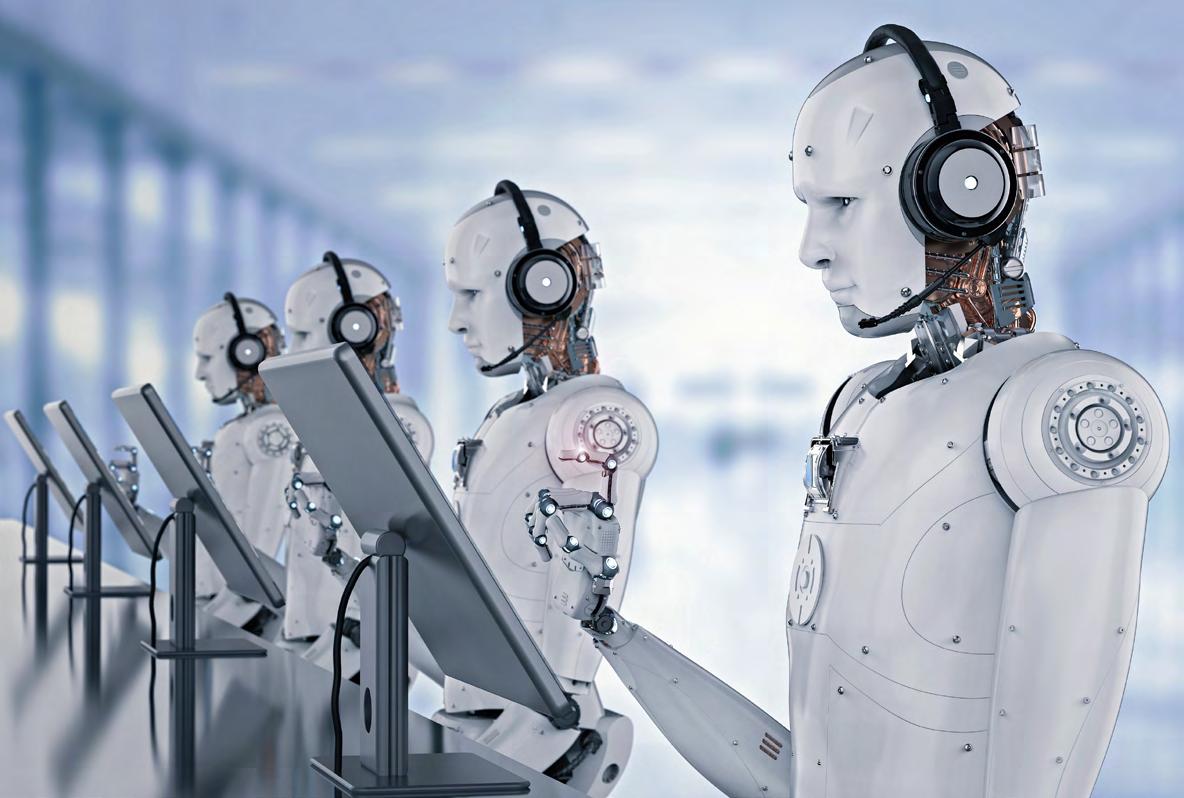 by David Bartosch
by David Bartosch
HUMANITY’S CULTURAL POTENTIALS, WORLD VIEWS, AND IN/TANGIBLE HERITAGES HAVE BEEN TRANSLATED INTO FLOWS OF BINARY CODED LIGHT EMISSIONS OR MICROWAVE SIGNALS, THEREBY EXISTING AS VIRTUAL IMAGES. THEIR INFORMATION HAS BEEN MULTIPLIED THROUGH THE WORLD WIDE WEB. MEANWHILE, LIGHTNING-FAST “WEAK” AI TECHNOLOGY RUNS THE GLOBAL STOCK MARKETS.
The military plays with AI, while AI developers loose track in comprehending what it does. Trained by specialists and global database, AI wins art competitions, composes music, beats world champions at Go, etc. ChatGPT uses its users as “mental pasture” for reinforced AI-learning from human feedback (RLHF). This is fascinating, but it also means reward without efforts and outsourced human creativity, loss of comprehension.

In 1986, Timothy Leary published an article called “Artificial Intelligence: Hesse’s Prophetic ‘Glass Bead Game’.” The novel from 1943 (which earned Hermann Hesse a Nobel Prize in 1946) portrays a future AI information society, “a Golden Age of mind,” which is based on “new thought technology,” Leary said. But Hesse’s AI is not “open” for the public. In fact, today’s experts say that we should be on high alert in regard to unrestricted use.
In Hesse’s vision, only an elite guild of the best of the best of the most intelligent, talented, and gifted universalists—chosen on the basis of their merits and sheltered from private interests, is enabled to interact with AI wonderland.
Hesse’s, as I call it, superhumanism is a precondition for the long-term sustainability of natural human consciousness and reason in connection

with AI. It provides inspiration for the proper preservation, comprehension, and subsequent absorption and further processing of ancient and more recent cultural memories, and for a balanced technological evolution. Hopefully, Hesse’s basic idea will be translated into existence in some kind of form. There is no time to waste.
The author is a Distinguished Research Fellow at the Institute of Advanced Studies in Humanities and Social Sciences, Research Institute for Globalization and Cultural Development Strategies at Beijing Normal University, China and a Researcher at the BC4LS
In Hesse’s early vision, AI capacitates and supports the maintenance of all cultural heritages in the central form of human understanding itself
HermannHesse Photo: iStock
A BASEMENT RENOVATION PROJECT LED TO THE ARCHAEOLOGICAL DISCOVERY OF A LIFETIME: THE DERINKUYU UNDERGROUND CITY, WHICH ONCE HOUSED 20,000 PEOPLE IN CAPPADOCIA.


Derinkuyu is an ancient underground city located in Türkiye, near the Nevsehir province of Cappadocia, about four hours away from the capital Ankara. The world-famous underground cave system, which once housed over 20,000 people and their livestock, is one of Cappadocia’s most remarkable attractions. It contains many sophisticated structures like ventilation, church, stable, and cellar, but only one-tenth of the town is accessible.
This incredible archaeological discovery was stumbled upon by pure chance in 1963 by a local inhabitant while renovating his house. When he
knocked down a wall in his basement he made more room than he intended, while he stumbled upon a gallery that led to an extensive 18-story-deep underground city we know today as Derinkuyu.
The bulk of the caves might have been built initially in the soft volcanic rocks by the Phrygians, an ancient Indo-European speaking people in the 8th–7th centuries BC, according to the Turkish Department of Culture.
The author is an editor of Eurasia Magazine
WE HAVE THREE PUZZLING MYTHIC TALES, FOR WHICH I HAVE TRAVELLED AROUND THREE CONTINENTS WITH MY WIFE, ANITA MAJOR. WE HAVE DEVOTED YEARS TO VISIT ETHNIC GROUPS IN TÜRKIYE, KAZAKHSTAN AND EGYPT WHO HAVE FOR CENTURIES BELIEVED THAT THEIR FOREFATHERS ONCE CAME FROM HUNGARY AND ARE RELATED TO HUNGARIANS.
During his travels, New York professor Ferenc Ispay received a strange request from a Hungarian member of the Jesuit order in Istanbul, a certain János Vendel: somewhere in Türkiye there is a small village called Macarköy (Magyarfalu, Hungarian village). The teacher had travelled hundreds of kilometres in Asia Minor, but no one had heard of Magyarfalu. He took a journey in the Toros Mountains with a forest ranger, into the nomadic world of the Yörük nomads. “Between Serik and Perge, I visited the newly established winter shelter of the Karakoyunlu tribe (...) The conversation went something like this: Tell the owner that I am Hungarian. We in Hungary know that the Yörüks and the Hungarians are related to each other. (...) The male population of the village sat in dignity at the tables set up in the small square. (...) “All eyes were on me,” recalls Ferenc Ispay of his research trip, “and I pointed to the ground and asked: Macarköy? I get an affirmative answer! Then I point
my index finger at my chest and introduce myself: Macar! That is, that I am Hungarian. The brothers stood up one after the other. They surrounded me, stared at me, shook my hand, pulled me to their table. Without any further explanation, they understood the purpose of my visit.”

“Magyar families were the leaders in the villages where our ancestors lived,” said a prominent member of the Hungarian tribe during our visit. “The founders of these families came to Egypt with Sultan Selim. Our ancestor Ibrahim el-Magyar, but we also call him el-Magyarab or el-Magyari, he does the same, was a prominent figure in the Turkish army, and then a leader in charge in Nubia.”
Ibrahim el-Magyar, Abraham, the slave leader, captain of the forgotten garrison. Today, his descendants populate the few villages that remain. According to official figures, there are about 7,000 in total today.

The third mythic tale takes us to the bottomless depths of Hungarian ancient history. The Kazakh steppe is home to the Madjar tribe of a few thousand people, which owes its existence to a miracle: for decades, the Russian empires of Tsarist and Stalinist Russia destroyed the people of the yurt settlements, shooting children, women helpless old men, and exiling them to the gulag, because the colonisers did not seek assimilation, but extermination. According to another, non-dominant view, this is where the handful of tribes with a kindred consciousness lives and still proudly claim to be Madjar, despite the Soviet terror that erased the past.
In the Torgay basin, the home territory of the Madjar tribe, there have long been stubborn peoples who have fought all invaders, the Mongol Dzungars, the Kalmyks, the Tsarist troops.
The author is a journalist
 Photos by the author
Photos by the author
Published by Neumann Lapkiadó
és Kommunikációs Kft.
Publisher's Headquarters: 1117 Budapest, Hungary, Infopark sétány 1.
Responsible Publisher:
Levente Horváth, Ph.D., Managing Director
Editor-in-Chief: Levente Horváth, Ph.D.
Managing Editors: Mariann Őry, Péter Petán
Text Editor: Erika Koskocki
Editor: Loretta Tóth
Photo Editor: Róbert Hegedüs
Graphic Design and Layout: Alexandra Érsek-Csanádi, Anita Kónya
Eurasia Magazine Online Editorial Board
Members:
Ágnes Bernek, Ph.D., László Csicsmann, Ph.D., Norbert Csizmadia, Ph.D., Mózes Csoma, Ph.D., Prof. Zoltán Dövényi, Ph.D., Béla Háda, Ph.D., Prof. Imre Hamar, Ph.D., Prof. Judit Hidasi, Ph.D., Dr. Máté Ittzés, Ph.D., Péter Klemensits, Ph.D., Kristóf Lehmann, Ph.D., Csaba Moldicz, Ph.D., Prof. Erzsébet N. Rózsa, Ph.D., Borbála Obrusánszky, Ph.D., Prof. József Popp, Ph.D., Sándor P. Szabó, Ph.D., Prof. Zsolt Rostoványi, Ph.D., Gergely Salát, Ph.D., Péter Szatmári, Ph.D., István Szerdahelyi, Ph.D., Prof. István Szilágyi, Ph.D., Prof. István Tarrósy, Ph.D., Prof. István Tózsa Ph.D., Prof. László Vasa Ph.D., Zoltán Wilhelm, Ph.D., Alexandra Zoltai
“The new geopolitical world order is multipolar, with new alliances forming along shared values.”

Source: BC4LS
Global Debates - 95 theses for long-term sustainability
Since 1949, China has given a total of 23 giant pandas to nine countries. Since 1982, joint exchange and cooperation between animal protection and research facilities in both countries became the only way for giant pandas to travel overseas and live there for a period of time,according to Global Times.
Copyright :
All rights of use of the databases of Eurasia Magazine Online are granted to the Neumann Lapkiadó és Kommunikációs Kft. The written material and photographs used on this website are protected by copyright. They may not be published, broadcast or transmitted in any form or by any means, or stored in whole or in part on a computer, whether in their original or transcribed form.


